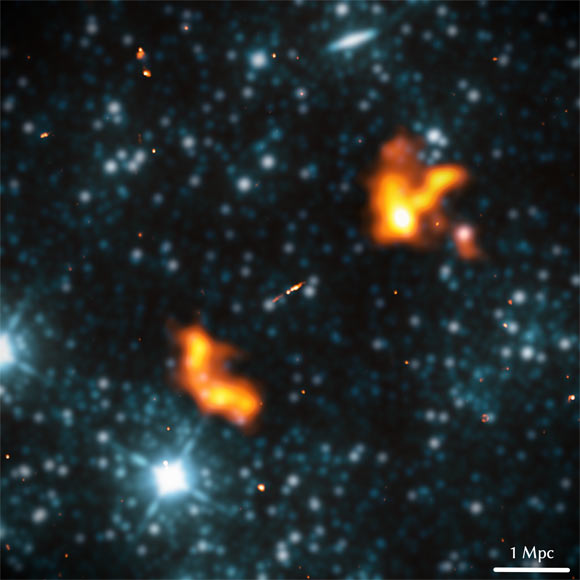The newly-discovered radio galaxy, dubbed Alcyoneus, has a projected length of 16.3 million light-years (4.99 Mpc).
“Most galactic bulges hold a supermassive black hole that grows by accreting gas, dust and stars from its surroundings,” said Leiden Observatory astronomer Martijn Oei and colleagues.
“The black hole ejects a fraction of its accretion disk plasma from the host galaxy along two collimated, magnetized jets that are aligned with its rotation axis.”
“The relativistic electrons generate, through spiral motion, synchrotron radiation that is observed by radio telescopes.”
“The two jets either fade gradually or end in hotspots at the end of diffuse lobes, and ultimately enrich the intergalactic medium with cosmic rays and magnetic fields.”
“The full luminous structure is referred to as a radio galaxy,” the astronomers said.
Source
“Most galactic bulges hold a supermassive black hole that grows by accreting gas, dust and stars from its surroundings,” said Leiden Observatory astronomer Martijn Oei and colleagues.
“The black hole ejects a fraction of its accretion disk plasma from the host galaxy along two collimated, magnetized jets that are aligned with its rotation axis.”
“The relativistic electrons generate, through spiral motion, synchrotron radiation that is observed by radio telescopes.”
“The two jets either fade gradually or end in hotspots at the end of diffuse lobes, and ultimately enrich the intergalactic medium with cosmic rays and magnetic fields.”
“The full luminous structure is referred to as a radio galaxy,” the astronomers said.
Source






















